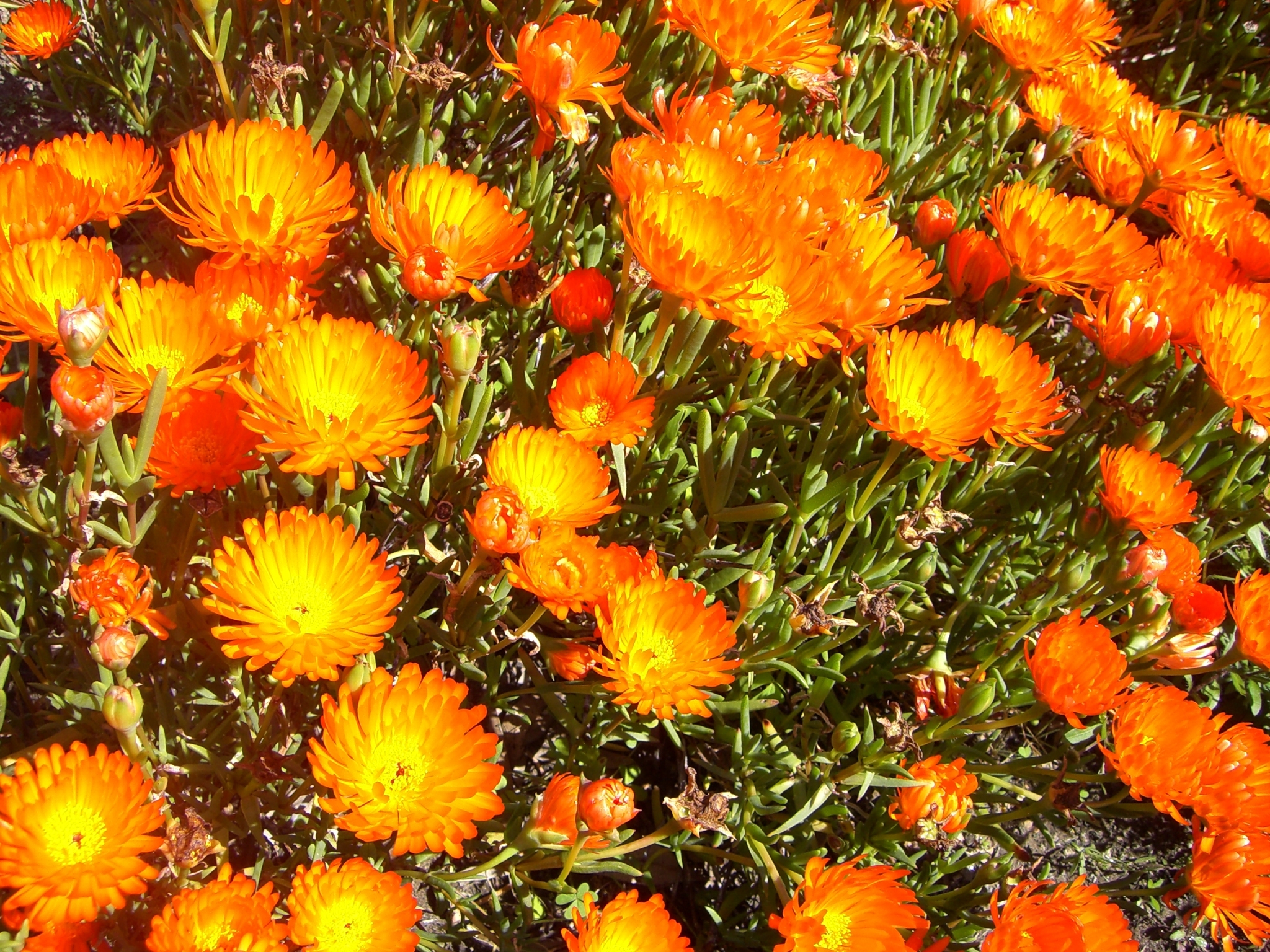
Greek lampros—brilliant, anthos—flower, in reference to the showy flowers.
Low, more or less shrubby perennial succulents with stems visible in gaps between the leaf clusters. Leaves cylindric to 3-angled, mostly curved, rarely dotted, united slightly at the base. Flowers terminal or axillary, solitary or in clusters. Sepals 5. Petals in 2-3 rows. Stamens erect or bent inwards. Stigmas 4-7, small; mostly summer. Ovary inferior, ovule placentation parietal. Nectar glands forming a continuous ring. Ovary chambers (4)5(-7), tubercle absent; seeds pear-shaped, pointed, rough, dark.
Generally grown for the bright flower colourings and often grown on embankments and rockeries; many cultivated plants are of hybrid origin with the parents unknown. Perhaps the most widely known species is the orange-flowered L. aurantiacus (DC.) Schwantes which has leaves to 3 cm long, rusty brown stems and flowers at least 4 cm wide.
L. tegens (F. Muell.) N.E. Br., Little Noonflower, and L. multiradiatus (Jacq.) N.E. Br. are occasionally naturalised.
Seed or cuttings.
Stems visible between the leaves; leaves smooth.
About 180 species from S Africa (Australia has 1).
Source: (1997). Aizoaceae. In: . Horticultural Flora of South-eastern Australia. Volume 2. Flowering plants. Dicotyledons. Part 1. The identification of garden and cultivated plants. University of New South Wales Press.
